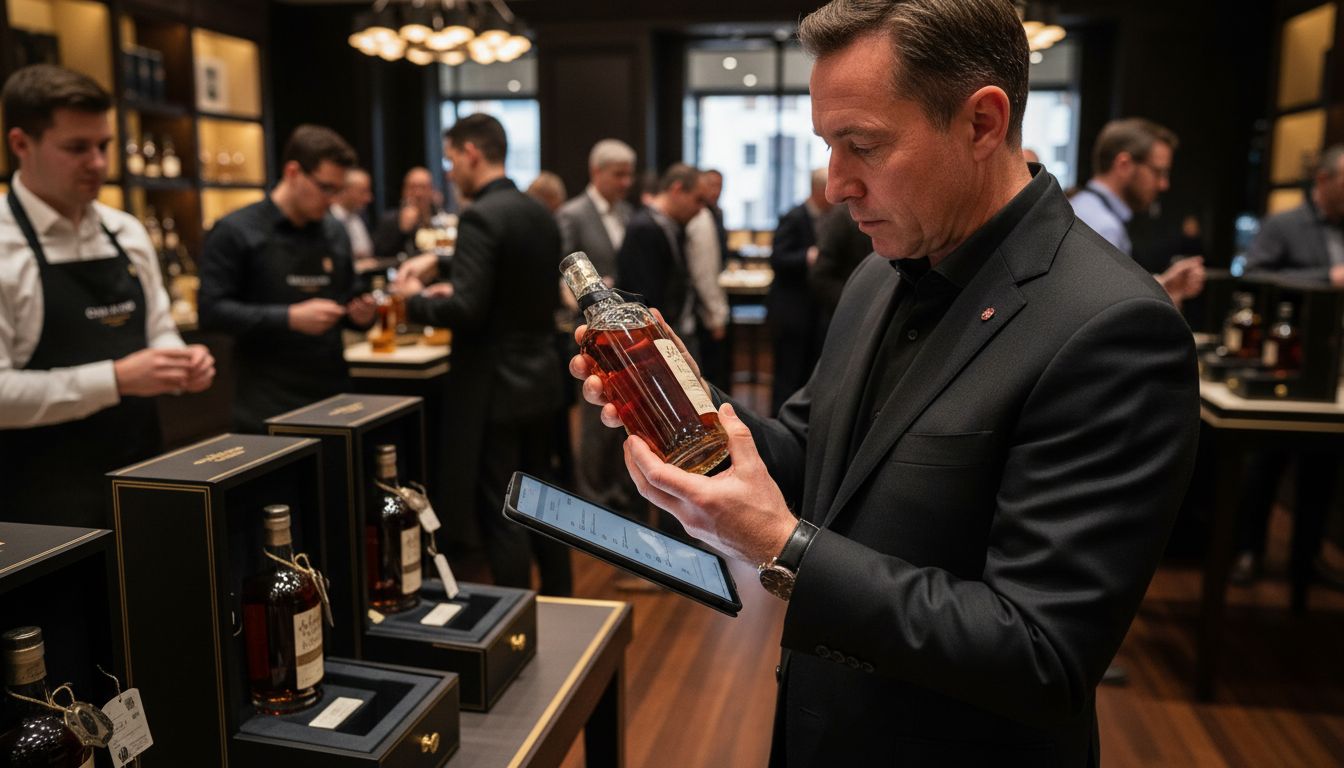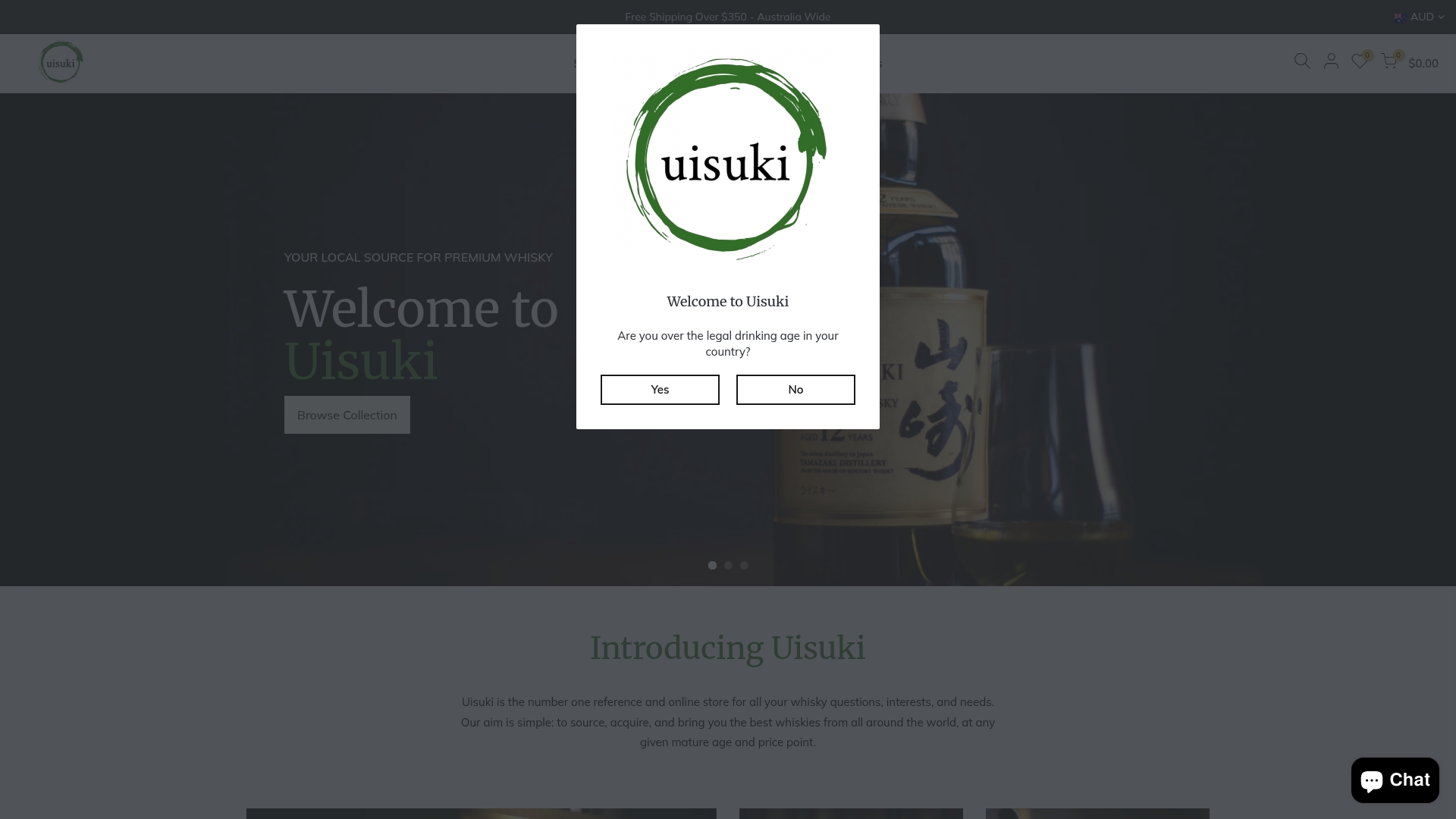Rare whisky collecting is booming in the australian market, with some enthusiasts spending over £10,000 each year to build their dream collections. Choosing the right path is more than a hobby—it is a strategic pursuit that blends passion, research, and investment. Whether you crave Japanese classics, unique australian expressions, or limited editions from across the globe, understanding how to start and protect your collection sets you up for lasting success.
Table of Contents
- Step 1: Define Your Whisky Collecting Goals
- Step 2: Research And Source Rare Bottles
- Step 3: Evaluate Authenticity And Provenance
- Step 4: Store And Protect Your Whisky Investment
- Step 5: Curate And Verify Your Collection Value
Quick Summary
| Key Insight | Explanation |
|---|---|
| 1. Define your whisky goals | Set clear objectives for your collection, such as focusing on certain distilleries or regions. |
| 2. Research rare bottles | Utilize both online and offline resources to track down rare whiskies and build a strong network. |
| 3. Verify authenticity | Carefully check labels, seals, and documentation to ensure the bottles are genuine. |
| 4. Store your collection properly | Preserve whisky quality by maintaining optimal storage conditions and keeping an inventory. |
| 5. Track collection value | Regularly assess and document your collection’s worth to understand its financial value. |
Step 1: Define your whisky collecting goals
Building a premium whisky collection starts with crystal clear objectives. According to Berry Bros. & Rudd, successful collectors develop strategic approaches such as obtaining bottles from every active distillery within a specific category or pursuing comprehensive collections of vintage releases.
Your collecting strategy might follow several compelling pathways. Some collectors focus on geographical representation tracking whiskies from different regions like Scotland, Japan, or Australia. Others prioritise rare limited editions or specific distillery series. Sotheby’s recommends studying release dates and unique bottle details to inform your collecting approach. Consider what excites you most: historical significance, investment potential, taste profile diversity or aesthetic presentation.
Before purchasing, map out your goals precisely. Are you collecting for drinking pleasure, investment potential, or pure passion? Determine your budget, storage capabilities, and long term vision. Some collectors aim to complete specific series while others seek singular extraordinary bottles. Your strategy should reflect personal passion balanced with strategic thinking. This intentional approach transforms random acquisitions into a meaningful whisky collection you will cherish.
Your Role of Whisky Collectors will evolve as you develop deeper understanding of this fascinating pursuit.
Step 2: Research and source rare bottles
Tracking down rare whisky bottles demands strategic research and dedicated networking. According to Whisky Advocate, successful collectors build robust strategies for acquiring exceptional whiskies through multiple channels such as retailer relationships, specialised auctions, and targeted research tools.
Lactodorum Whiskey Club recommends developing a comprehensive approach to sourcing rare bottles. This includes joining dedicated whisky clubs and online forums where collectors share insider knowledge, attending specialist auctions and industry events, and establishing connections with boutique retailers who understand rare releases. Professional collectors often develop networks that provide early access to limited edition bottles before they become widely available.
Your research strategy should combine digital and physical approaches. Subscribe to specialised whisky publications, follow distillery newsletters, and monitor online auction platforms. Create alerts for specific distilleries or series you are pursuing. Consider international sources beyond local markets to expand your potential acquisitions. Remember that patience and persistence are key when hunting rare bottles.
For deeper insights into rare whisky selection, explore our guide on selecting rare whisky and refine your collecting approach.
Step 3: Evaluate authenticity and provenance
Authenticity is the cornerstone of premium whisky collecting, separating genuine treasures from potential counterfeits. Lactodorum Whiskey Club emphasises the critical importance of meticulously scrutinising labels and packaging for subtle indicators that distinguish authentic bottles from sophisticated forgeries.
When evaluating a potential acquisition, examine multiple authentication factors. Check the bottle seal integrity, inspect label printing quality, verify holographic or security elements, and confirm serial number consistency. Original documentation such as distillery certificates, purchase receipts, and provenance records can significantly enhance a bottle’s credibility. Professional collectors recommend consulting expert appraisers or utilising specialised authentication services when dealing with high value or extremely rare whiskies.
Digital resources can also support your authentication process. Join specialist whisky forums, follow expert collectors on social media, and engage with online communities that share detailed authentication insights. Some collectors maintain extensive databases tracking bottle characteristics, production runs, and known forgery patterns. Your diligence in verification protects your investment and ensures the integrity of your growing whisky collection.

For comprehensive guidance on rare whisky authentication, explore our what makes a whisky rare guide to deepen your understanding.
Step 4: Store and protect your whisky investment
Preserving the quality and value of your whisky collection requires strategic storage and protection. According to Whisky Analysis, innovative preservation techniques can significantly maintain the integrity of your precious bottles. Researchers recommend decanting open whisky into smaller amber glass bottles as an effective method for preventing oxidation and preserving original flavour profiles.
Create a dedicated storage environment that protects your investment from potential damage. Maintain consistent temperatures between 15 to 20 degrees Celsius, away from direct sunlight and significant temperature fluctuations. Store bottles vertically to keep corks moist and prevent cork degradation. Consider investing in a specialised whisky cabinet or climate controlled storage unit for your most valuable specimens. Humidity levels between 50 to 70 percent will help prevent cork shrinkage and potential seal breaches.
Document your collection meticulously. Photograph each bottle from multiple angles, record purchase details, and maintain a comprehensive inventory. Insurance for high value collections becomes crucial as your investment grows. Some collectors use specialised whisky collection insurance that covers potential damage or loss.
For additional insights into protecting your whisky collection, explore our guide on ordering whisky online safely to understand transportation and handling best practices.
Step 5: Curate and verify your collection value
Rare Whisky 101 reveals that serious whisky collectors invest significantly in their passion, with average annual spending exceeding £10,000 and some collections reaching valuations of £100,000. Understanding and tracking your collection’s value becomes crucial for both financial planning and collector satisfaction.
To effectively curate and verify your collection’s worth, develop a systematic approach. Regularly consult specialist whisky valuation resources, auction house price guides, and online marketplaces that track rare bottle valuations. Document each bottle’s provenance, purchase price, current market value, and potential appreciation trajectory. Professional collectors recommend comprehensive digital and physical documentation including high resolution photographs, detailed condition reports, and authenticated certificates.
Consider engaging professional appraisal services specialising in whisky collections at least once every two to three years. These experts can provide nuanced insights into market trends, bottle rarity, and potential investment performance. Create a detailed spreadsheet tracking acquisition dates, original costs, current estimated values, and any significant historical or production details that might influence future valuation. Your meticulous record keeping transforms your collection from a simple assemblage of bottles into a carefully managed investment portfolio.
![]()
Learn more about building a strategic collection with our why whisky collectors seek rare bottles guide to deepen your understanding of collection management.
Elevate Your Whisky Collection with Uisuki
Building a premium whisky collection means facing key challenges such as sourcing rare bottles, verifying authenticity and protecting your investment. If you want to turn your passionate pursuit into a strategic and rewarding collection, we can help. Explore our curated range of Older Bottling’s – Uisuki.com.au for rare and sought-after bottles that meet the high standards discussed in the article.

Don’t wait to enhance your collection with genuine whiskies backed by expert descriptions and provenance. Visit Uisuki.com.au today to discover exceptional Scotch and other premium whiskies, including selections like Scotch Whisky (all) - Glenglassaugh – Uisuki.com.au. Start building your meaningful collection now and enjoy the confidence that comes from sourcing quality with trusted guidance.
Frequently Asked Questions
How do I define my whisky collecting goals?
To define your whisky collecting goals, start by identifying what excites you most about whisky—whether it’s taste, historical significance, or investment potential. Create a plan based on these interests, setting a budget and considering the types of bottles you want to acquire.
What is the best way to research and source rare whisky bottles?
A strategic approach to sourcing rare whisky bottles involves joining whisky clubs, attending specialised auctions, and leveraging online forums for insider knowledge. Create alerts for specific whiskies and stay persistent, exploring both local and international markets to find unique offerings.
How can I evaluate the authenticity of a whisky bottle?
Evaluate authenticity by examining the bottle’s seals, labels, and printed details. Check for original documentation, like receipts or certificates, and consider consulting expert appraisers if dealing with high-value bottles.
What are the recommended storage conditions for my whisky collection?
Store your whisky in a dedicated environment with consistent temperatures between 15 to 20 degrees Celsius and humidity levels of 50 to 70 per cent. Keep bottles upright to protect corks and avoid direct sunlight or extreme temperature fluctuations.
How can I track and verify the value of my whisky collection?
To track your collection’s value, maintain a detailed inventory that includes purchase prices, current market values, and provenance details for each bottle. Regularly engage with valuation resources and consider professional appraisals every few years to stay updated on market trends.
What steps should I take to protect my whisky investment?
To protect your whisky investment, document the collection meticulously and consider specialised insurance for high-value bottles. Store bottles in a controlled environment and regularly check their condition, addressing any issues promptly to maintain value.

